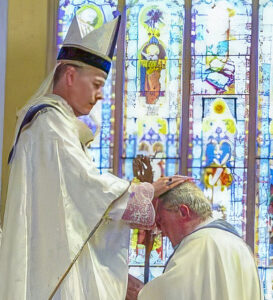
The Sacrament of Holy Orders
Exercising the mission entrusted by Christ to his apostles until the end through Bishops, Priests, Deacons
If you or anyone you know is interested in discerning a call to the priesthood or deaconate, contact the pastor.
The pastor can talk with you about how to learn more about these vocations. Call the parish at 503 771-6039. The Archbishop has a retreat each year for those interested in considering the priesthood. The pastor can tell you more about this as well.
Some Initial FAQ's
Yes there would.
There would still be those called by God to give their whole hearts to Christ and live Consecrated life as celibate priests, religious brothers or religious sisters.
All of these members of the body of Christ are called by God to give their whole hearts to God but they all live out their calling in different ways. Click here for a outline that explains the details.
Explanation of the Sacrament of Holy Orders
Below is a simple outline that can navigate you to one of the five sections.
If you would like to read a more detailed outline, click here.
Why is this Sacrament Called Orders?
-
The word “order” in ancient Roman culture signified an established civil body, especially a governing body.
-
Since ancient times, the bodies that the Church designated as orders were the order of Bishops, Priests, and the incorporation into one of these bodies is called an “ordination”.
-
An ordination is also called a consecration. To consecrate is to make or declare sacred, to set apart or dedicate for a particular purpose. In this case, the person is set apart by Christ for his Church and is given a special gift of the Holy Spirit.
Background and Origin of the Sacrament
- In the Old Testament, Israel, the chosen people, were constituted by God as “a kingdom of priests and a holy nation.”
- The whole people were to be a priestly people
- But God set apart one of the 12 Tribes, Levi, to carry out specific duties of the priesthood.
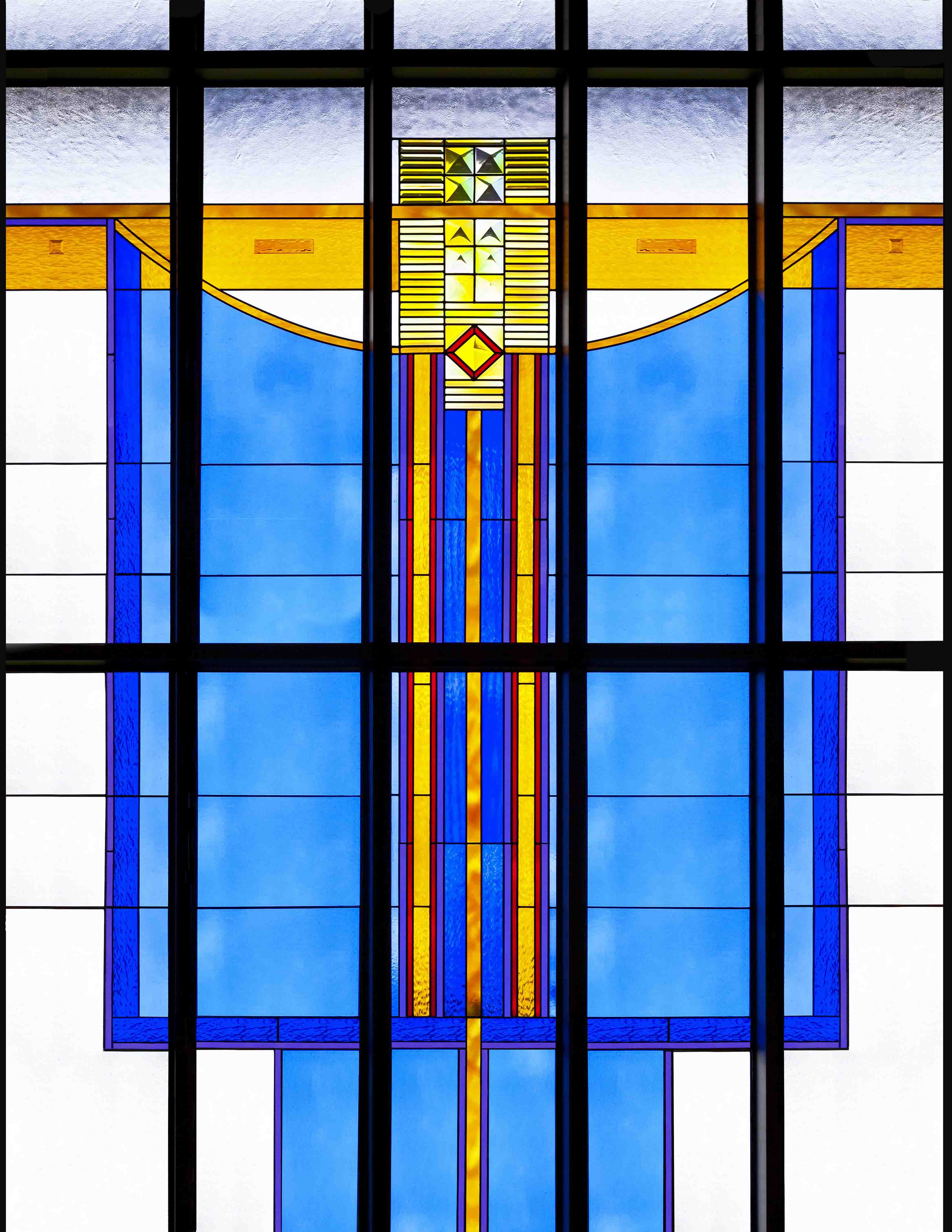
- All that the priests of Levi prefigured is fulfilled in Christ, who is the one true mediator between God and man. The priests of Levi had to continually offer sacrifice for sins, but Jesus’ one unique sacrifice on the cross purifies all from sin.
- Just as with Israel before, there are two types of priesthood in the Church today:
- The Common priesthood of all Christians:
- The Ministerial and Hierarchical Priesthood:
- All those in the Church are the Body of Christ: The priests represent the head and the laity represent the members of Christ.
- When the ordained minister is serving officially in his role in the Church, the Church believes that Christ himself is acting.
- The Priest has the task of:
- Representing Christ to the Church:
- Acting the in name of the whole Church to God:
The Three Degrees of Holy Orders
- Episcopate (Bishops): Bishops are priests who are chosen to receive the fullness of the Sacrament of Holy Orders. They are the visible head of a particular Church or diocese and are responsible before Christ for the pastoral care of the faithful in that diocese. “As successors of the apostles and members of the college of bishops, they share in the apostolic responsibility and mission of the whole Church under the authority of the Pope, successor of St. Peter” (CCC 1594). Through the Grace of the Holy Spirit, a sacred character is conferred on them so that they take the place of Christ himself in his roles as teacher, shepherd, and priest. Thus the bishop is responsible for teaching, ruling and sanctifying.
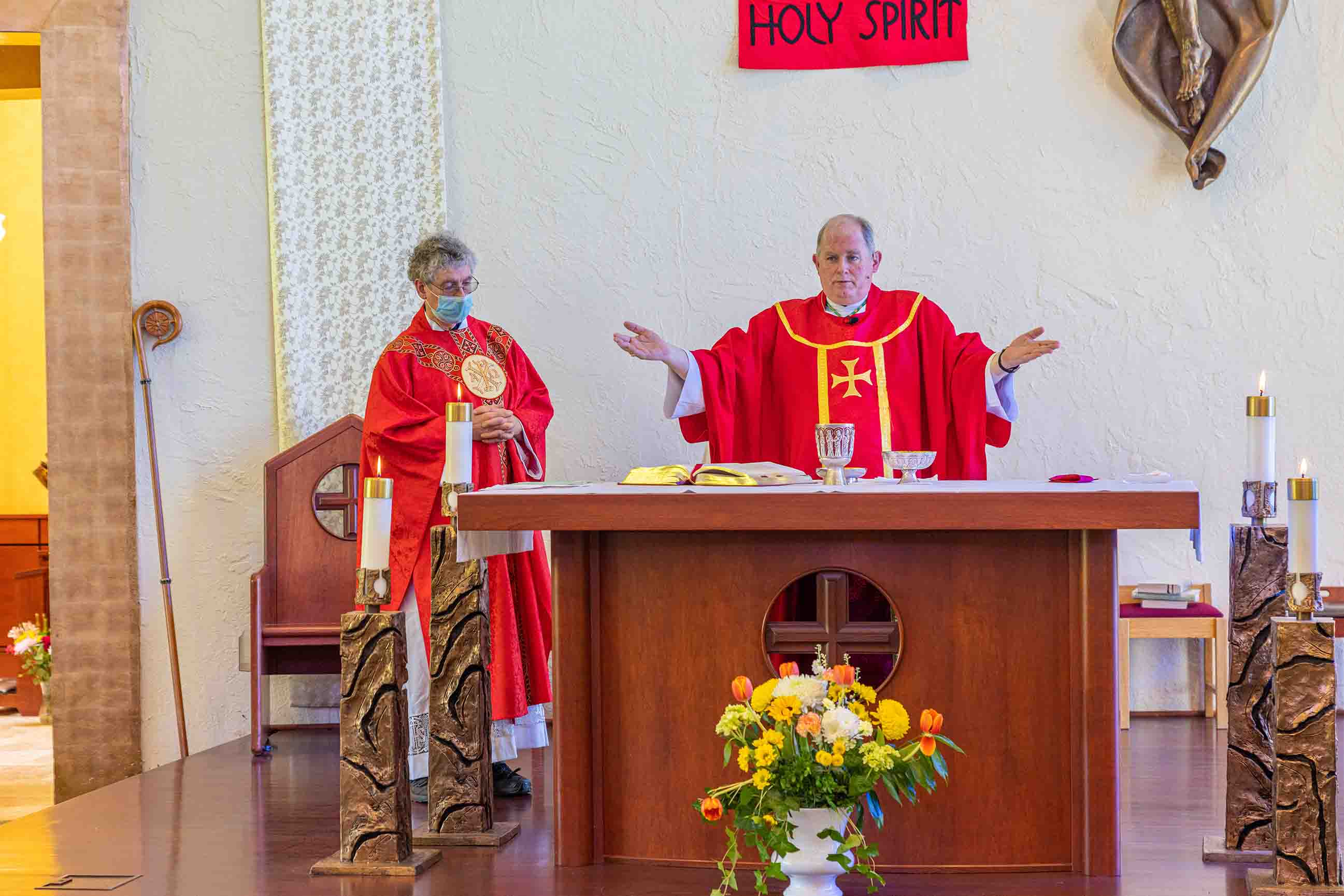
- Presbyterate (Priests): Priests are co-workers/agents of the bishops in caring for the faithful in the diocese. They form the presbyterium (the community of priests of the diocese) and have as their primary duty the Eucharistic offering, preaching, and shepherding/pastoring the faithful. When ordained, the priests make a promise of obedience to the bishop. The bishop assigns each priest to have responsibility in his name for a parish community or a particular Church office or ministry.
- Diaconate (Deacons): Deacons assist bishops and priests in the diocese in serving the People of God. “Deacons share in Christ’s mission and grace in a special way. The sacrament of Holy Orders marks them” with a permanent imprint (“character”) which configures them to Christ, who was a “deacon” or servant of all (cf CCC 1596). It confers on them important functions in the ministry of the word (preaching the homily at Mass), “in the distribution of Holy Communion, in assisting at and blessing marriages, in presiding over funerals and in various ministries of charity” (cf CCC 1596). Deacons can be married and have a family. This ministry, which began early on (Acts 6) was restored after Vatican II. However, the Eastern Church has always maintained this important ministry.
- Episcopate (Bishops): Bishops are priests who are chosen to receive the fullness of the Sacrament of Holy Orders. They are the visible head of a particular Church or diocese and are responsible before Christ for the pastoral care of the faithful in that diocese. “As successors of the apostles and members of the college of bishops, they share in the apostolic responsibility and mission of the whole Church under the authority of the Pope, successor of St. Peter” (CCC 1594). Through the Grace of the Holy Spirit, a sacred character is conferred on them so that they take the place of Christ himself in his roles as teacher, shepherd, and priest. Thus the bishop is responsible for teaching, ruling and sanctifying.
How is this Sacrament Celebrated?
- Holy Orders takes place during Mass in the Cathedral of the diocese:
- The bishop confers it through the laying on of hands.
- This is followed by a solemn prayer of consecration–that the Holy Spirit might pour out on the candidate the gifts needed for their particular ministry.
- There are Special Rites Associated with each particular Ordination (cf CCC 1574):
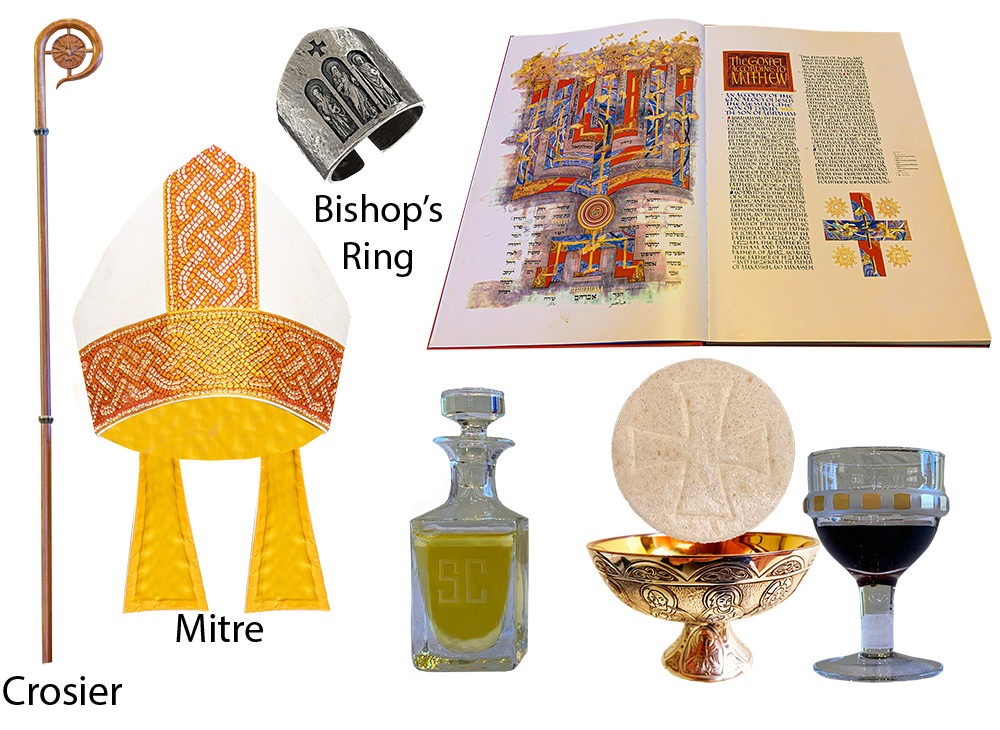
- All three are anointed with holy chrism: A
sign of the special anointing of the Holy Spirit who makes their ministry fruitful. - The bishop is given the book of the Gospels, the ring, the miter, and the crosier: The sign of his apostolic mission to proclaim the Word of God, of his fidelity to the Church, the bride of Christ, and his office as shepherd of the Lord’s flock.
- The priest is presented with the paten and chalice: This represents the Eucharist that he offers up for the people.
- The deacon is given the book of the Gospels: This represents his mission to proclaim the Gospel of Christ.
- All three are anointed with holy chrism: A
Who Can Confer and Receive this Sacrament?
- This is a sacrament of the apostolic ministry and the Bishops are the successors of the Apostles. Thus, they are the only ones who can confer this sacrament.
- These Bishops have to be validly ordained. This means that they need to be in the line of apostolic succession in order to hand on the “gift of the Spirit, the apostolic line” (cf CCC 1576).
- Jesus chose men for his 12 Apostles whose knowledge and authority was passed to the Bishops of the Church through an unbroken chain of succession. We continue Jesus’ chosen pattern.
- No one chooses ordination for himself. God has to call
 the individual and the Church has to accept them.
the individual and the Church has to accept them.
- The Personal Call: The person senses a call from God to the vocation of Holy Orders
- The Process of the Church’s Acceptance: This call is tested by being lived out in a Catholic Seminary for 4 plus years. In the seminary the candidate is given spiritual and theological training and formation. The next step is being ordained to the Transitional Deaconate for a year in which the candidate works in an actual parish. After this year, if the Church accepts the candidate, then he is ordained to the Priesthood.
- Celibacy: In the Roman Catholic Church, priests are to remain unmarried.
- The Gift of Celibacy is granted by God & those who choose it, do so for the sake of:
- Love: Having an undivided heart–to Love God alone.
- The Kingdom of God: Being freer to build God’s Kingdom wherever God may lead.
- Women/Married Priests:
- The Church will never have women priests—because of Jesus’ example—and the Sacramental system of the priest representing Christ the head of the Church.
- But, the Roman Rite of the Catholic Church could have married priests in the future because celibacy is not linked to the theology of priesthood, but is only a practice of the Church.
- The Eastern Rite Catholic Churches have married priests.
- In the Eastern Orthodox Church, Celibacy has been always held in high esteem. Priests and deacons are allowed to marry. But Bishops are taken only from the priests that are celibate.
- The Gift of Celibacy is granted by God & those who choose it, do so for the sake of:
The Effects of the Sacrament
- The Indelible Character:
- A permanent, sacramental character or seal is imprinted on the soul (as also happens in Baptism), which configures the recipient to Christ in a unique way in his office as priest, pro
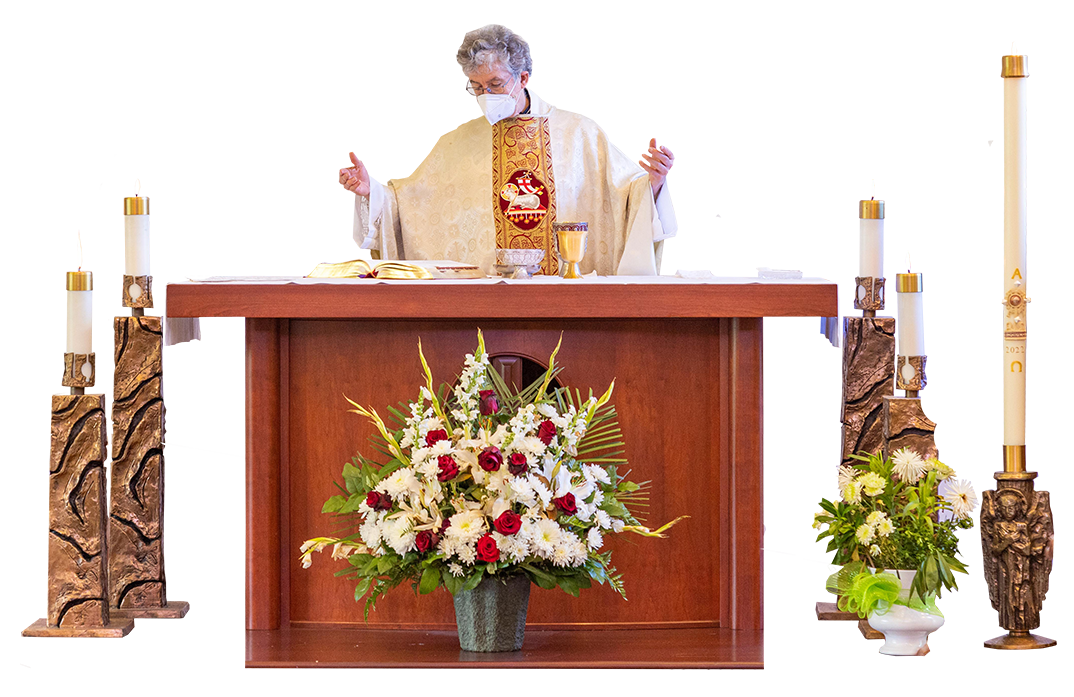 phet and king.
phet and king. - For grave reasons, a priest could have his faculties taken away and be prevented from celebrating the Eucharist or serving as a priest. But, in his character heretains his identity as priest and thus does not become a lay person. His priestly character is retained also if he chooses to leave the priesthood and get married by doing it properly through the Church.
- A sinful priest does not affect the sacraments he performs. This is because it is Christ himself that works through him in the Sacrament. Thesacrament is not dependent on the holiness of the minister.
- A permanent, sacramental character or seal is imprinted on the soul (as also happens in Baptism), which configures the recipient to Christ in a unique way in his office as priest, pro
- The Graces of the Holy Spirit: The sacrament equips the ordained with the necessary graces to serve and lead the Church, to preach the Gospel, and to sanctify the People of God.
